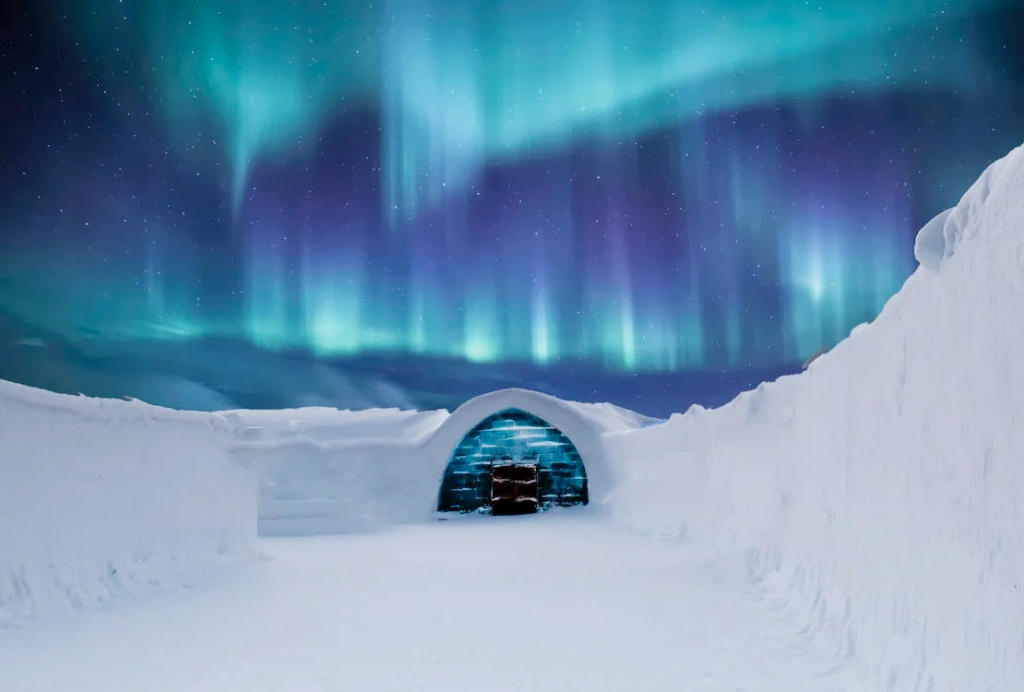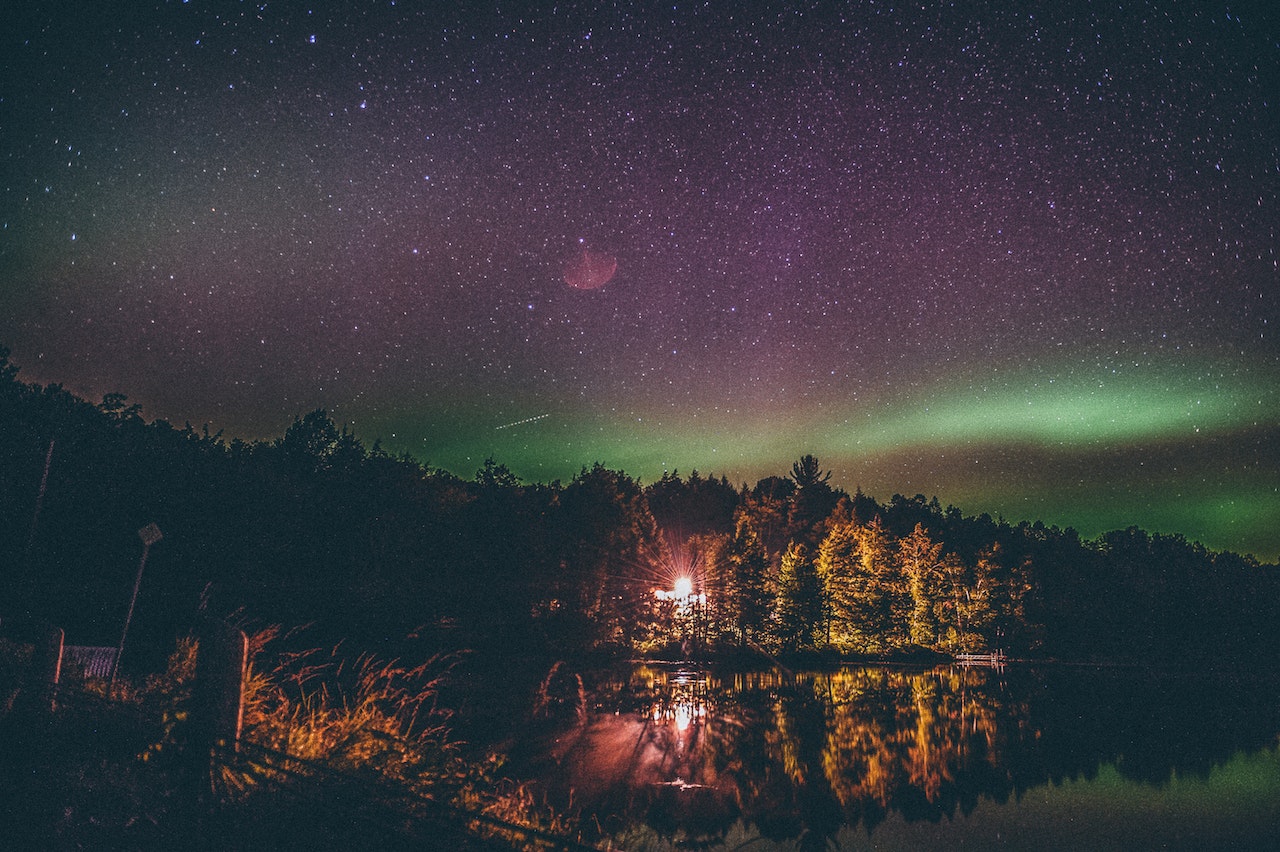Get ready for an adventure that’s worthy of any bucket list — witnessing the Northern Lights — as we explore the best places to see them and more. Travelers and adventurers from all over have flocked to the perfect spots in and around the arctic circle just to see this magical phenomenon. Because who wouldn’t want to witness magic, right?
Seeing the Northern Lights is not only breathtaking, but it also has cultural and scientific significance. Did you know that the Inuit people of Canada and Alaska believe that the Northern Lights are spirits playing ball with a walrus skull? That’s just one of the many fascinating facts about these dancing lights in the sky.
In this Northern Lights travel guide, we’re going to reveal the absolute best places to see this spectacular light show. From the charming city of Tromso in Norway to the rugged wilderness of Fairbanks, Alaska, we’ll take you to the top destinations for experiencing the Aurora Borealis. And let’s not forget about the essential tips and tricks we have for capturing this magical display with your camera.
Top Places to See the Northern Lights
Tromso, Norway

If you want the best chance of viewing the Northern Lights, then Tromso, Norway is the perfect destination. Tromso is located in the Arctic Circle, which means the Northern Lights are visible most of the time.
Its unique location, surrounded by mountains and fjords, also creates the ideal viewing condition. Sometimes you might even find yourself seeing whales or seals in the surrounding waters.
The best time to visit Tromso for Northern Lights viewing is between late September and early April. During this time, the days are shorter, and the nights are longer, so there’s a lot of opportunity for you to witness the lights.
Aside from Northern Lights viewing, Tromso offers plenty of other activities you can do. There’s dog sledding, snowmobiling, or touring on a reindeer sled. And if you’re a fan of seafood, Tromso is perfect for savoring fresh local dishes, and if you’re into history, there are also museums to learn about the city’s fascinating past.
Abisko, Sweden
Looking for a romantic and secluded spot to witness the Northern Lights? Travel to Abisko in Sweden.
Abisko’s remote location and clear skies make it a prime spot for Northern Lights viewing, and with a range of activities available, you’re sure to make memories that last a lifetime. Whether you want to capture the lights on camera, cozy up in a traditional Sami tent, or take a ride on a dog sled, Abisko has something for everyone.
For the ultimate Northern Lights experience, plan your visit between September and early April. But if you want something else to do, like during the daytime, Abisko has plenty of other exciting activities to offer.
You can explore the nearby national park or go snowboarding or sledding. And if you’re daring enough, take a dip in a frozen lake! Brrrrrr! Of course, you can indulge in some delicious Swedish cuisine and cozy up in a traditional log cabin.
Reykjavik, Iceland

For a quirky, cool, and cultural way to experience the Northern Lights, head over to Reykjavik, Iceland. The capital of Iceland is vibrant but not bustling like most cities, offering plenty of opportunities for any visitor to explore its unique landscapes and city life.
It is also a prime spot for experiencing the Northern Lights. Reykjavik’s location just below the Arctic Circle means you can see the lights right within the city. But if you can take a quick drive to the countryside, you’ll find a more awe-inspiring view. One thing to note though, the weather conditions in Reykjavik can be unpredictable, so prepare to spend a few nights for a better chance of success..
The best time to visit Reykjavik for Northern Lights viewing is from September to April, with the peak viewing times being from December to February.
Aside from the Northern Lights, Reykjavik has plenty of other exciting activities to offer. You can visit the famous Blue Lagoon hot springs, explore the city’s museums and galleries, or take a tour of the stunning glaciers and waterfalls in the surrounding countryside. And, of course, you can sample some of Iceland’s unique cuisine, such as fermented shark and traditional meat soup.
Fairbanks, Alaska
Are you up for an out-of-this-world Northern Lights experience? Then head to Fairbanks, Alaska. This rugged and adventurous destination has everything you need for an unforgettable trip.
Fairbanks sits at the heart of Alaska, which makes it an excellent location for viewing the Northern Lights. The city’s location away from light pollution means that you can witness the light phenomenon in all its glory. Kalesa pro tip: dress warmly and comfortably (bring extra wraps!), and you’re sure to have an awesome viewing experience.
The best time to visit Fairbanks for Northern Lights viewing is from late August to April, with the peak viewing times being from December to February. During this time, you can enjoy long nights and an increased chance of seeing the Aurora Borealis.
Aside from the Northern Lights, Fairbanks has plenty of other exciting activities to offer. You can take a dog sled tour, visit the Chena Hot Springs, or even try your hand at ice fishing. And, of course, you can immerse yourself in the local culture by visiting the Museum of the North or sampling some of the city’s delicious seafood.
Other Places to See the Northern Lights

If you’re still hungry for more Northern Lights action, our travel guide lists other fantastic destinations around the world where you can catch a glimpse of this awe-inspiring phenomenon.
Yellowknife, Canada
Yellowknife, the capital of Canada’s Northwest Territories, is located under the auroral oval, making it one of the best places to see the Northern Lights. With its clear, crisp skies and abundant natural beauty, Yellowknife is a Northern Lights paradise that’s just waiting to be explored.
Kakslauttanen Arctic Resort, Finland
Stay in a glass igloo and marvel at the Northern Lights from your cozy bed in the Kakslauttanen Arctic Resort. Along with this unique experience, the resort also offers a variety of Arctic activities to refresh and rejuvenate you.
Svalbard, Norway
If you’re feeling particularly adventurous, why not head to Svalbard, an archipelago located in the Arctic Ocean between Norway and the North Pole? Here you can witness the Northern Lights in a truly wild and untamed environment, as well as explore the stunning natural landscapes and unique local culture.
Rovaniemi, Finland
Rovaniemi, the official home of Santa Claus, is also a fantastic destination for Northern Lights viewing. Located in the heart of Finnish Lapland, Rovaniemi offers a range of Aurora-hunting and viewing activities, as well as other winter sports and cultural experiences for any kind of traveler.
Tips for Viewing the Northern Lights
Timing
When it comes to catching the Northern Lights, we know that timing is crucial. One must remember that the Northern Lights are a natural occurrence, and therefore, can be unpredictable, so you need to be patient and flexible with your plans. However, the best time to catch a glimpse of this magical phenomenon is during the winter months when the nights are longest and the skies are darkest.
Weather
Clear, crisp skies are ideal for viewing the Northern Lights, so keep an eye out on the weather so you can plan your trip accordingly. Cloudy skies are an obstruction, so choose a time when the weather is likely to be clear and calm.
Light Pollution
One of the most important things to remember when viewing the Northern Lights is that darkness is key. Light pollution can greatly reduce the visibility of the aurora, so it’s important to find a spot that’s as dark as possible. Avoid cities and towns and head to a remote location for the best viewing experience.
Camera Settings

If you want to capture the beauty of the Northern Lights on camera, it’s important to get your camera settings just right. The following tips can help you capture stunning photos:
- Use a tripod: A sturdy tripod is essential for capturing sharp, blur-free photos of the Northern Lights. It will help you keep your camera steady during long exposures.
- Adjust your ISO: To capture the Northern Lights’ beautiful colors, you’ll need to set your camera’s ISO to a high value. This will make your camera more sensitive to light to capture more of the subtle details. For DSLRs, start with an ISO between 800 and 3200, while for mobile phones, use the Night mode or Pro mode to adjust the ISO settings.
- Adjust your shutter speed: The shutter speed controls how long your camera’s sensor is exposed to light. A long exposure is necessary for capturing the faint, delicate details of the Northern Lights. For DSLRs, start with a shutter speed between 10 and 30 seconds, while for mobile phones, use the Night mode or Pro mode to adjust the shutter speed.
- Use manual focus: When photographing the Northern Lights, it’s best to use manual focus to ensure your photos are sharp and in focus. Set your focus to infinity, or focus on a distant object, such as a mountain or tree, to ensure sharp focus.
- Bring extra batteries and memory cards: Cold temperatures can quickly drain your camera’s battery, so be sure to bring extra batteries and keep them warm in your pocket. Additionally, bring extra memory cards to ensure you have plenty of storage space for all your photos.

In conclusion, wherever you choose to go, remember to dress warmly, plan your trip carefully, and be patient. The Northern Lights are unpredictable, but with a little luck and some perseverance, you’re sure to witness one of the most awe-inspiring sights on Earth.



